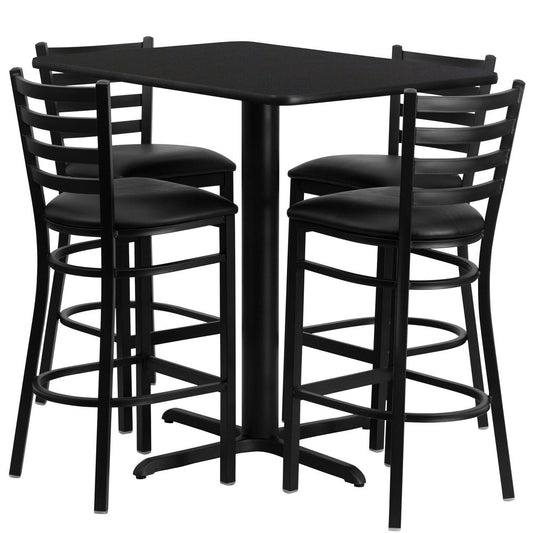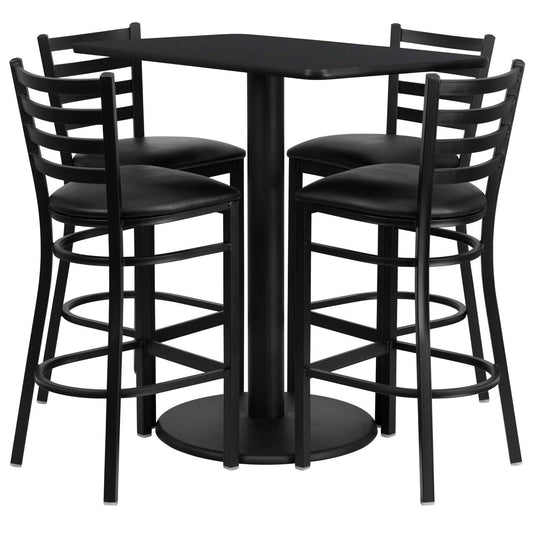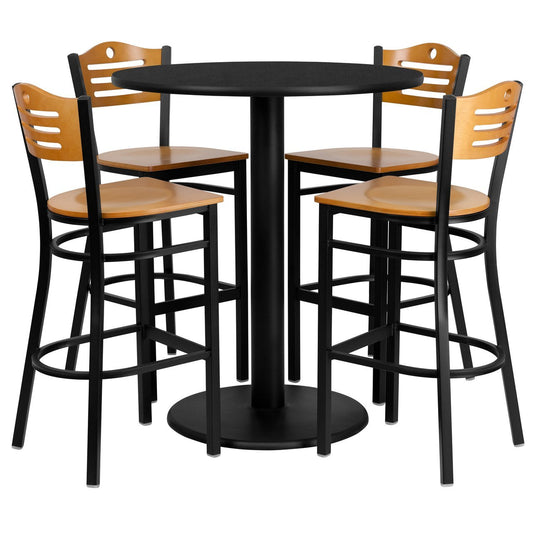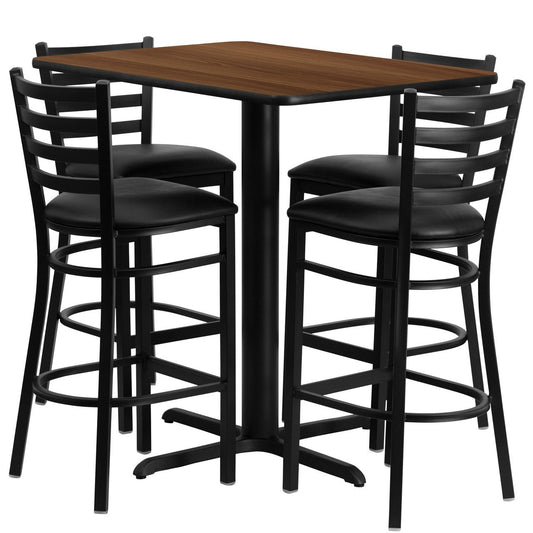
How to Select Restaurant Seating That Enhances Your Ambiance?
Share
One of the important features, when considering the ideal atmosphere to dine in a restaurant, is often regarded too lightly – the seating in a restaurant. Restaurant seating design is a core concept control since it influences not only the perception of comfort by our patrons but also the duration of stay and repeat business. These include different forms of seats such as cozy booths up to high-top bar stools; they have an overwhelmingly substantial role in defining your brand and the feel of the place. When it comes to seating it is recommended to choose the right type of chairs and table for your café, restaurant, or casual dining food business since it is a vital factor in the success of your establishment.
The proper planning of the restaurant seating strategy is an important key to establishing an ideal dining atmosphere for your clients, improving their dining experience, and ultimately increasing the overall revenue. With the many different designs out in the market, it becomes difficult to choose the right seating for your restaurant that will fit the surrounding environment.
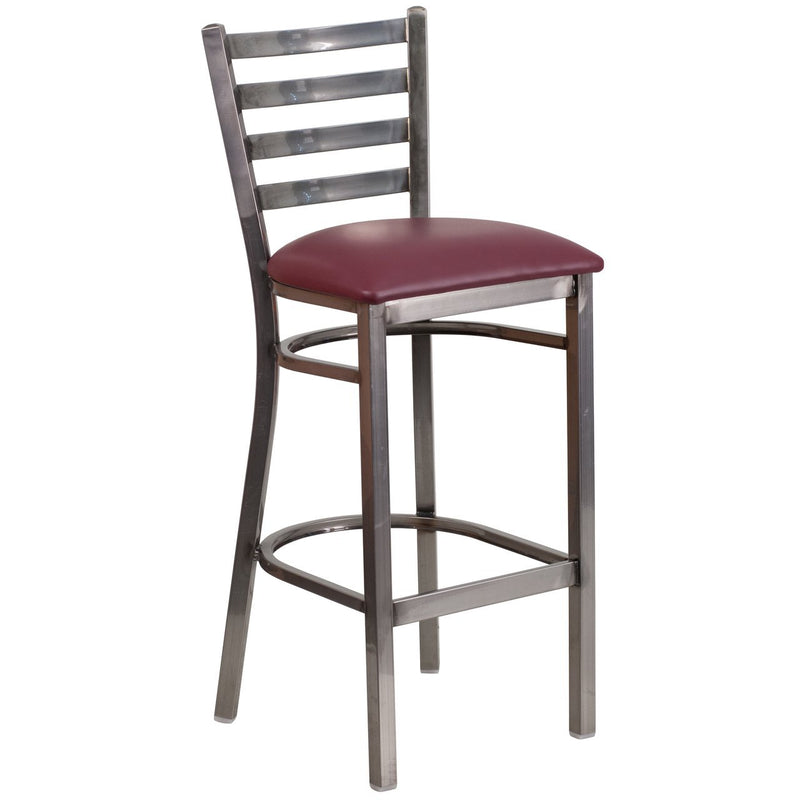
Heavy Duty Clear Coated Ladder Back Metal Restaurant Barstool - Burgundy Vinyl Seat
The Clear Coated Ladder Back Metal Restaurant Barstool will be an attractive addition to your restaurant, pool hall or your bar at home. The barstool has a ladder back design, an 18 gauge steel frame and a 2.5" thick foam seat and upholstered in burgundy vinyl.
 1. Understand Your Restaurant’s Concept
1. Understand Your Restaurant’s Concept
The proper planning of seating at restaurants is an important key to establishing an ideal dining atmosphere for your clients, improving their dining experience, and ultimately increasing the overall revenue. The tone of your restaurant business can be rather formal because it is a restaurant that serves special meals or it can be an informal local diner where people may stop by for a bite or it might be a modern or chic restaurant café.
Each of these concepts will require different restaurant seating designs. For example:
- Fine dining establishments generally opt for plush, comfortable chairs with armrests and formal arrangements, focusing on encouraging a longer stay.
- Casual restaurants or fast food joints might go for simple, no-frills seating that encourages quick turnover without sacrificing comfort.
- Trendy cafes might feature minimalist designs or unique pieces that complement an artistic, urban aesthetic.
They need to coordinate with their concept to complement the lighting and the overall mood of the guest. The high level of specialization of this industry means that certain trends in furniture design should help the owner achieve the goal of comfortable seating that also represents the personality or spirit of the brand.
2. Matching Seating to Your Restaurant’s Concept and Ambiance
The first aspect of restaurant seating design is the proper categorization of the types of seating available concerning the concept and mood of the restaurant. The binding of the seat should correspond to the theme of your restaurant, the internal and external environment as well as the guests.
For instance, a diner café may need a less formal furniture setting or design like soft booths or a combination of height adjustable café tables and sofas. When selecting seating that fits the idea of the restaurant, makes the eating experience much more appealing and gives the patron an experience they will never forget.
-
Casual Dining: Comfortable and Practical
For casual dining, you should focus on comfortable spacious seating that allows large and soft chairs to be used. This makes customers comfortable. -
Fine Dining: Elegant and Luxurious
Fine dining is done out of materials such as leather, velvet, or fine dining. Wider tables with rather comfortable chairs are used with the intent to convey guests' comfort. -
Fast Food and Quick Service: Functional and Efficient
In fast food and quick service, it is advisable to choose lightweight non-corrosive materials for the seating such as plastics or metals. These practical options tend to have a high turnover and there is less difficulty in cleaning.
3. Think About Space and Layout
Restaurant seating design is one of the primary focuses of overall space planning. Another consideration must decide the level of density in a restaurant since it is possible to fill all the available space with chairs and tables. You don’t want people to feel they are suffocated in your restaurant but you also want as many people to come in as possible. The only challenge in this approach is balancing between the cost of doing business and adequately satisfying your clientele.
Start by taking the time to determine the square footage of your restaurant. As a basic seating at restaurants, fine dining restaurants should be designed around 10-12 seats per employee or around 18-20 square feet per diner, while casual restaurants may be designed around 5-6 seats per employee or 10-15 square feet per diner. Also, consider how the layout of the seats affects traffic around the area. You want to make sure that employees can easily navigate within the restaurant, serve their table occupants, and remove dirty dishes without any chance of physical contact with customers.

Heavy Duty Clear Coated Ladder Back Metal Restaurant Barstool
The Clear Coated Ladder Back Metal Restaurant Barstool will be an attractive addition to your restaurant, pool hall or your bar at home. The barstool has a ladder back design, an 18 gauge steel frame and a natural wood seat. The welded joint assembly and two curved support bars give the chair great strength and stability.
4. Choose a Variety of Seating Options
Incorporating a variety of seating arrangements means that one will always find a comfortable seating arrangement that fits their needs. Today you see many restaurant layouts that specifically include table service, booths, bars, and outdoor dining areas if possible.
Encourage customers to also prefer products that accommodate a variety of uses such as; If you have a bar area, high-top stools can be a great choice. Bar stools make the space more comfortable and stylish and customers will prefer to spend more time while having a drink. Also, booths can guarantee privacy and comfort for families or several friends while regular tables allow for inviting many people at once.
5. Select the Right Materials
The type of material used in the development of your restaurant seating defines not only the look of the seating but also its wear resistance as well as its ability to be cleaned. For this kind of space, you will need furniture that looks very welcoming even when used to the limit. This is especially true if you are running a busy restaurant with a lot of traffic, such as a fast-casual or volume restaurant.
For the seating in restaurants that seem to be upscale or that want to give an ambiance of luxury then you should consider using furniture that has leather or velvet material on the seats. However, these materials cannot be used in areas where there is a lot of traffic and frequent accidents such as spilling of food and drinks. However, vinyl or faux leather finishes can be looked for which can provide fashionable seating options. Metal chairs create more echo and they are ideal for industrial-style restaurants, wooden seats give a natural look to the eateries.
6. Consider the Flexibility of Your Seating Arrangement
The most important element that should not be overlooked in restaurant seating ideas is flexibility. You are here Safe and comfortable, if there is room for a lover’s twos, somewhere else there’s space for several couples.
Movable seating options, which means chairs that can easily be moved, allow you to change the size of tables to accommodate those in a group setting or even accommodate special occasions. However, if using chairs in the outside seating areas it might be useful to use foldable or stackable chairs due to potentially changing climate. Besides being very useful, space savers are also generally designed to facilitate the storage of seating when not in use.

30'' Square Natural Laminate Table Set with 4 Ladder Back Metal Barstools
Don't have time to search through hundreds or thousands of table and seating options? This complete Bar Height Table and Stool set saves you time to focus on your growing business. This set includes an elegant Natural Laminate Table Top, Round Base and 4 Metal Ladder Back Barstools. Surface is heat, scratch and moisture resistant.
7. Match Seating to Your Target Audience
In a restaurant, the ease of your seating arrangement should account for the demographic group of your clients. Think of the attributes that would be most important to the kind of clientele you usually serve. For instance, if your restaurant targets families as its main market segment, you will need to provide such facilities as child-size chairs or carriers commonly referred to as high chairs or booster seats.
For younger, fashion-conscious individuals, more modern furniture with a stylish look—such as trendy metal bar stools—might be more appealing than traditional seating. If your audience is more corporate, then affordably luxurious but easily adjustable seating with enough table space for a laptop or paperwork may be more appreciated.
8. Create Zones for Different Dining Experiences
If you want to achieve different moods and work on customer expectations, make sure you divide your restaurant into different areas. Such areas can offer guests more or fewer seating options depending on the type of meal they are having.
For example, it could be a corner filled with cozy booths – perfect for couples going on a date, and large round tables suitable for groups of people looking for a sociable dinner. Above the bar seating, there could be people who just want to have a snack or individuals who want to watch their favorite football match on a nearby television screen.
9. Ensure Your Seating Matches Your Brand’s Aesthetic
Finally, your restaurant's seating arrangement should always be derived from the brand. The color scheme, and the type of fabric used to make the seats should be by your brand's theme. For example, if you are running a farm-to-table restaurant, wooden seating options with the most natural finish would be very suitable for the organization. On the other hand, a modern café can use metal chairs and lean design to have a more urban look.
Guests can get an idea of the company's personality through the right arrangement and seating choice. Remember, consistency is important. All aspects matter and since your seating arrangement will contribute to the ambiance and branding, it matters.

30'' Round Mahogany Laminate Table Set with Round Base and 4 Ladder Back Metal Barstools
Don't have time to search through hundreds or thousands of table and seating options? This complete Bar Height Table and Stool set saves you time to focus on your growing business. This set includes an elegant Mahogany Laminate Table Top, Round Base and 4 Metal Ladder Back Barstools. Surface is heat, scratch and moisture resistant.
Final Thoughts
Choosing the right seating in a restaurant is much more than just chair and table selection. It depends on the kind of space you have, your patronage, and the kind of dining atmosphere you want to create. If you pay proper attention to comfortable seating arrangements, practicality, and stackability as well as the beauty and versatility of designing, you can easily develop the best restaurant seating plan to transform your dining space into a place loved by customers.
Ultimately, a well-designed seating layout helps foster a positive atmosphere, encourages repeat business, and contributes to your restaurant’s long-term success. Whether you’re just starting or looking to revamp your current space, make sure that your restaurant seating design reflects your brand, caters to your customers' needs, and enhances the overall dining experience.

